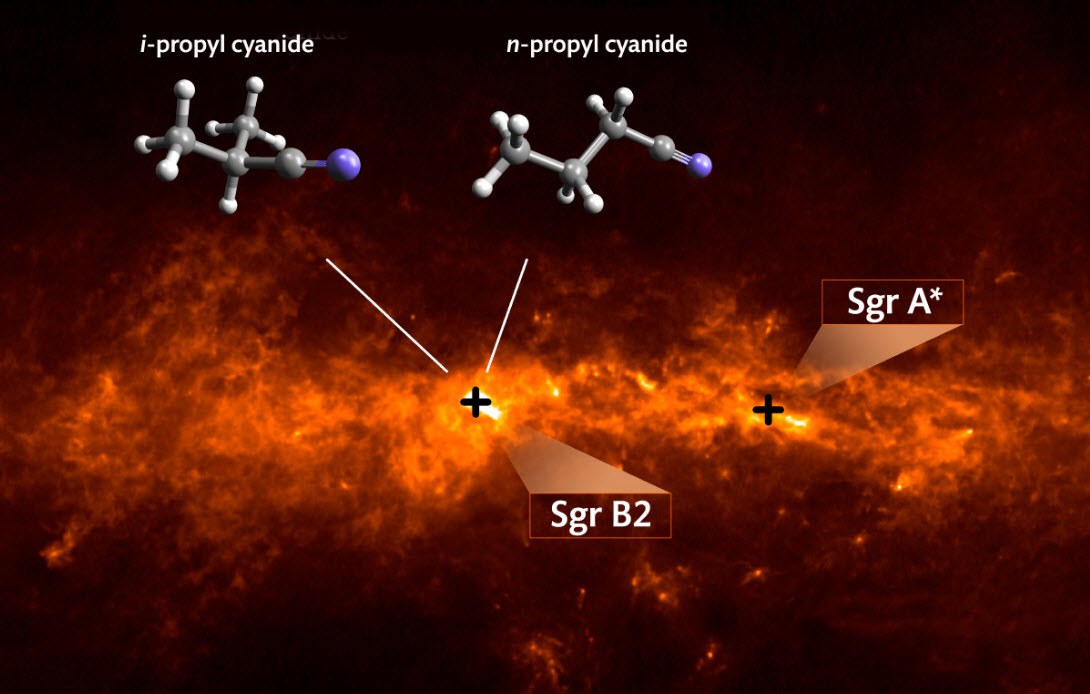New molecule found in space suggests life origins
September 30, 2014

Dust and molecules in the central region of our Galaxy: The background image shows the dust emission in a combination of data obtained with the APEX telescope and the Planck space observatory at a wavelength around 860 micrometers. The organic molecule iso-propyl cyanide with a branched carbon backbone (i-C3H7CN, left) as well as its straight-chain isomer normal-propyl cyanide (n-C3H7CN, right) were both detected with the Atacama Large Millimeter/submillimeter Array in the star-forming region Sgr B2, about 300 light years away from the Galactic center Sgr A*. (Credit: MPIfR/A. Weiß — background image, University of Cologne/M. Koerber — molecular models, amd MPIfR/A. Belloche — montage)
Astronomers have detected radio waves within a giant gas cloud in interstellar space corresponding to an unusual carbon-based molecule called isopropyl cyanide, needed for life, as described in the journal Science (Sept. 26.)
No comments:
Post a Comment